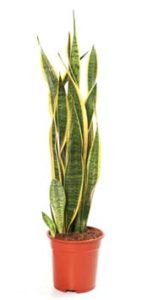The air quality in most Indian cities and towns is considered harmful on several measures and Delhi’s is even hazardous. The air quality inside air conditioned offi ces can be marginally better. Companies can do little about air quality outside, but can they improve it inside their offices?
That’s what Kamal Meattle, India’s foremost green building evangelist has been doing since he opened his fi rst commercial offi ce space in South Delhi in 1996. Even today, he claims, his 50,000 sq ft offi ce space is the healthiest in India, if not the world. Hinting that his claims are not all gas, he says his complex adheres to the American Society for Heating, Refrigeration, and Air-conditioning Engineers (ASHRAE) standards, one of the best in the world.
He has figures to show off. He saves Rs.200 per sq ft a year on running cost using green methods like growing indoor plants and painting the building white. What takes the cake is – the productivity of employees working in his building is a phenomenal 20 % higher. And reduction in energy requirements by an outstanding 15%.
How does he do it? It’s not rocket science; it’s simply belief in the wonders of some plants.
The popular talk show TED called him to share his wisdom, which he did in June 2014. He said: “Seventeen years ago I became allergic to Delhi air, my lung capacity was at 70% and it was killing me. With the help of IIT, TERI and NASA, we discovered three common plants through which we could grow fresh air indoors to keep us healthy.
The wonder plants are:
Chrysalidocarpus lutescens (Areca Palm)
- Works well in the day time
- Great for living areas
- Need about 4 shoulder-high plants per person
- Need to be take it outdoors once every 3–4 months
- The leaves need to be wiped every day in Delhi and once a month in a cleaner city
- The soil used should be vermicompost and/or hydroponic methods
Sansevieria trifasciata (Mother-in-law’s tongue)
- Converts CO2 into O2 at night
- Require about 6–8 such waisthigh plants per person
- Leaves need to be wiped in the same way as the Areca Palm
- The soil used – vermicompost and/or hydroponics
Epipremnum Aureum (money plant)
- Excellent for removing formaldehyde and other volatile organic compounds
- Best grown using hydroponic method
Mr. Meattle said: “With the above plants you can grow all the fresh air you need.” PBC tried these plants in its building in Delhi which is 50,000 sqft and 20 years old, its 1200 plants for 300 occupants. “Our studies have found that there is a 42% probability of blood oxygen going up by 1% if one stays indoors in this building for ten hours.
The Government of India has published a study to show that this is the healthiest building in New Delhi. The study shows, compared to other buildings, about reduced occurrence of eye irritation by 52%, respiratory by 34%, headaches by 24%, lung impairment by 12% and asthma by 9%.” PBC is replicating its experience in 1.75 million sq ft. building which will have 60,000 indoor plants.
More Will Live in Cities Why is this important?
The world’s energy requirements is expected to grow by 30% in the next decade , 40% of it is taken by buildings currently and 60% of the world’s population will be living in buildings in cities with population of over one million in the next 15 years and there is a growing preference for air-conditioned offi ce and living spaces.
While better technology is helping businesses reduce their carbon footprint, the sheer growth that India and emerging markets will see in the coming years can ruin the planet further. Unconventional methods too can contribute signifi cantly to support the current green building drive. There’s no better teacher than Nature.














